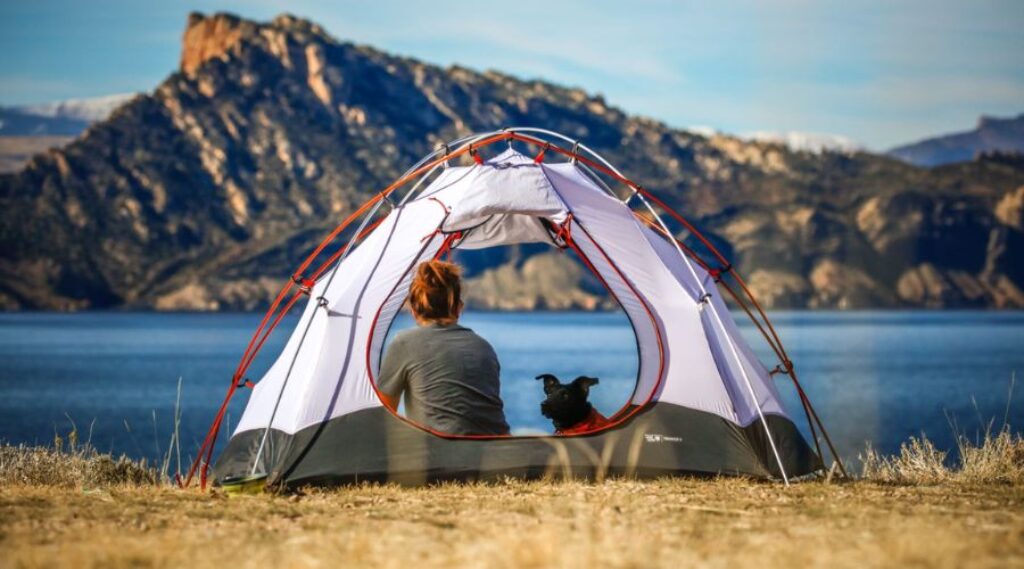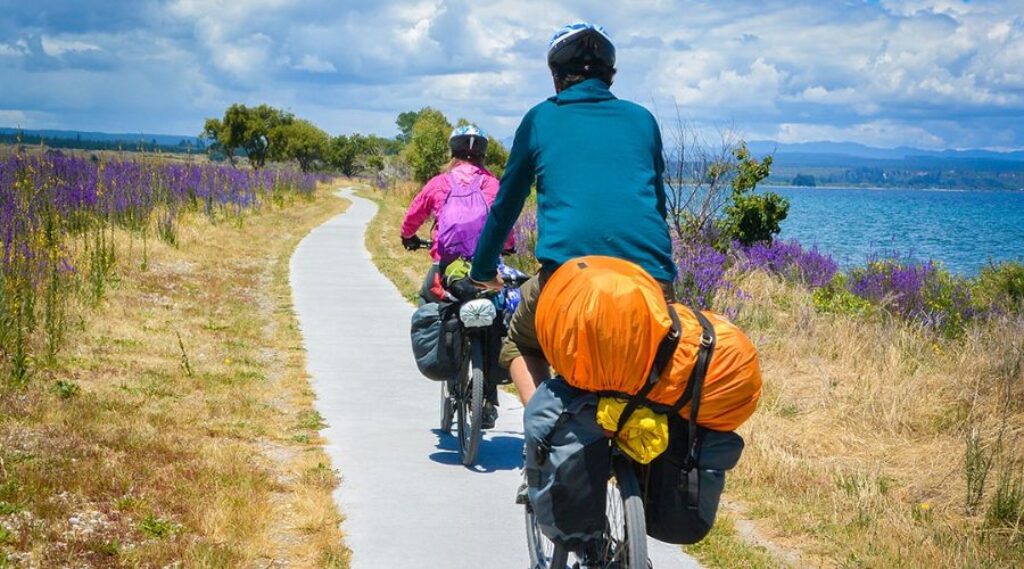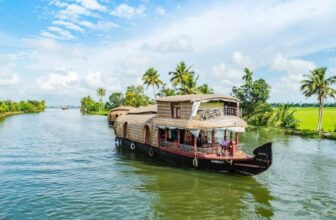
The tourism industry is at a turning point, needing to strike a balance between expansion and sustainability. International visitor numbers have more than quadrupled during the last 20 years, reaching 1.4 billion in 2019. Although the surge in tourism aided in both personal and economic development, the environment and nearby populations were frequently sacrificed in the process. Alongside the rise in tourism came gentrification, congested streets, pollution, and habitat destruction.
Destinations have started taking action in recent years to combat the negative effects of unsustainable tourism: Palau protected 80% of its waters, Dubrovnik restricted the number of cruise ships that could dock daily, Hawaii outlawed the sale of sunscreens that harm reefs, and Barcelona cracked down on unauthorized vacation rentals. Although these are undoubtedly positive milestones, there’s a lot to be done.
A study conducted by Booking.com found that 76% of passengers prefer to travel in an environmentally friendly manner. Although this change in perspective is encouraging, many tourists are unsure of where to start.
By embracing more ethical travel practices and endorsing businesses that are making a difference, you can contribute to the solution. In this blog article, we provide guidelines on what constitutes practical, sustainable travel. We can achieve a future where tourism preserves and honours our planet and its cultures by reconsidering the way we travel. Continue reading to get our best advice for environmentally and socially responsible travel.
Here are some sustainable practices that you can adapt while travelling:
1. Take a different route

A lot of places were practically loved to death before the epidemic as a result of their fame. Numerous tourists were overwhelming historic towns, beaches, and other popular tourist destinations; this problem is currently referred to as “overtourism.”
By avoiding tourist traps and venturing off the usual path, you may contribute to the prevention of a revival of overtourism as a traveller. Though it could be alluring to visit the spots that everyone is showcasing on Instagram, it might be far more fulfilling to discover lesser-known locations. In actuality, a lot of tourist attractions fall short of visitors’ expectations; you could have to wait in line for hours just to find that the place is different from what you witnessed online.
Go beyond the lists of the “Top 10” places to see; instead, go through Google Maps and ask locals or other tourists for suggestions. Go to a more rural location or smaller city rather than staying in a large tourist hub. By doing this, you may spread the advantages of tourism to other local communities while lessening the pressure on over-visited places. Choose a small-ship cruise liner if you decide to travel by cruise.
2. Take it slow and remain for a while.

When attempting to fit as much as possible into a trip, it may be easy to become overwhelmed. This may be your only trip to the location, after all. Even though a full schedule can sound perfect on paper, you’ll probably wind up running around all day during your holiday. You may cross off several sights on your bucket list, but you won’t have the opportunity to truly experience the place. Not to mention, tension is a guaranteed result of this frantic “hit and run” kind of travel.
Give yourself additional time to investigate the location—do yourself a favour. Rather than going on several shorter excursions per year, choose to go on one longer vacation. Instead of moving from place to place as soon as you get to your destination, stay still for a bit.
You will be able to fully enjoy the location you are visiting if you take your time. Being unhurried allows you to fully experience the local way of life, form stronger relationships with locals, and discover the destination’s distinct features. Learn how to prepare traditional foods and sample the flavours of the area by enrolling in a cooking class. You’ll undoubtedly find hidden treasures, like a unique neighbourhood coffee shop, if you spend a day strolling or cycling around the town. Browse a museum and arm yourself with an abundance of interesting information.
More time spent in a place results in travel experiences that are more genuine, significant, and unforgettable. In addition, it generates more advantages for the neighbourhood companies you patronize and lessens the strain on the towns and places you visit. As an added benefit, leisurely travel is more environmentally friendly because it produces fewer carbon emissions than driving or flying between locations.
3. Make use of economical means of transportation

Apart from travelling at a leisurely pace, there are several methods to mitigate the carbon emissions generated throughout your journey. Travel and tourism are responsible for around 8% of global carbon emissions. Because of this, the travel sector plays a major role in climate change, one of the biggest risks to tourism, humankind, and the future of the planet.
The majority of tourism’s carbon impact is attributed to driving, air travel, and other modes of transportation. All forms of transportation need energy, but some are cleaner and more efficient than others. There is a difference in the ways you get to, from, and around your destination.
The least efficient forms of transportation are often automobiles and aeroplanes. When taking a trip to a nearby location, consider using the train or coach to reduce your carbon footprint and enjoy the beautiful surroundings. When you get to your location, instead of hiring a car, think about taking the bus, the train, or a bicycle tour of the area. Choose an electric, hybrid, or smaller vehicle if you decide to hire one.
Remember that there is no one-size-fits-all set of rules when it comes to the kind of transportation to choose because the type of energy utilized also affects the carbon footprint. The solution that is the most sustainable will differ depending on the location. Wind energy powers trains in the Netherlands, zero-emission buses operate in Washington, D.C., and some of Thailand’s notorious tuk-tuks are switching to electric vehicles. To make an educated choice, familiarize yourself with the various modes of transportation available at the location you are visiting.
4. Use less energy and water.

Energy is needed for heating, lighting, and power in addition to transportation in the tourism industry. This may significantly strain the region’s water supply and electricity infrastructure, especially when combined with visitors’ heavy water usage. Many tourist locations find it difficult to meet the demand since visitors frequently use a lot more water and electricity than locals do. This issue will only get worse as the world’s temperatures increase and the population expands.
Try your best to preserve the local energy and water resources while you’re away. When not in use, turn off the TV, lights, and any other equipment. Turn off the air conditioning or adjust the thermostat a few degrees higher before you leave your hotel. Rather than taking a bath, try taking a quick shower. To save needless laundry, hang up the “Do Not Disturb Sign” and wash your clothing by hand.
Reducing your environmental impact can also be achieved by booking accommodations with little impact. This might be a higher-end facility that makes use of water- and energy-saving technology and renewable energy sources, or it could be a smaller, more basic type of lodging.
Conclusion
While many companies are adopting a sustainable culture in the travel business, eventually you should look into their practices rather than focusing on keywords like green or sustainable. To demonstrate that you are considering sustainability when making purchases, find out more about the precise procedures and guidelines they have put in place and pose questions. What measures do they take to conserve water and energy? Have single-use plastics been banned? How do they encourage inclusivity and diversity? Do they appoint locals to positions in management? Do they give local producers and suppliers priority? Do they encourage responsible wildlife interaction?
FAQs
Q1. What does it mean to travel sustainably?
Ans: “Tourism that takes full account of its current and future economic, social, and environmental impacts, addressing the needs of visitors, the industry, the environment, and host communities” is how the UN Environment Program and UN World Tourism Organization describe sustainable tourism.
Q2. Which three categories of travel are sustainable?
Ans: Social, economic, and environmental are the three interconnected aspects that make up the idea of sustainability. Social sustainability takes into account how travel affects the growth and well-being of regional communities.
Q3. Describe a sustainable travel itinerary.
Ans: Businesses and other organizations can utilize a green travel strategy to find and promote strategies to support a variety of sustainable, or less ecologically destructive, modes of transportation, with the main focus being reducing travel by single-user private cars.






